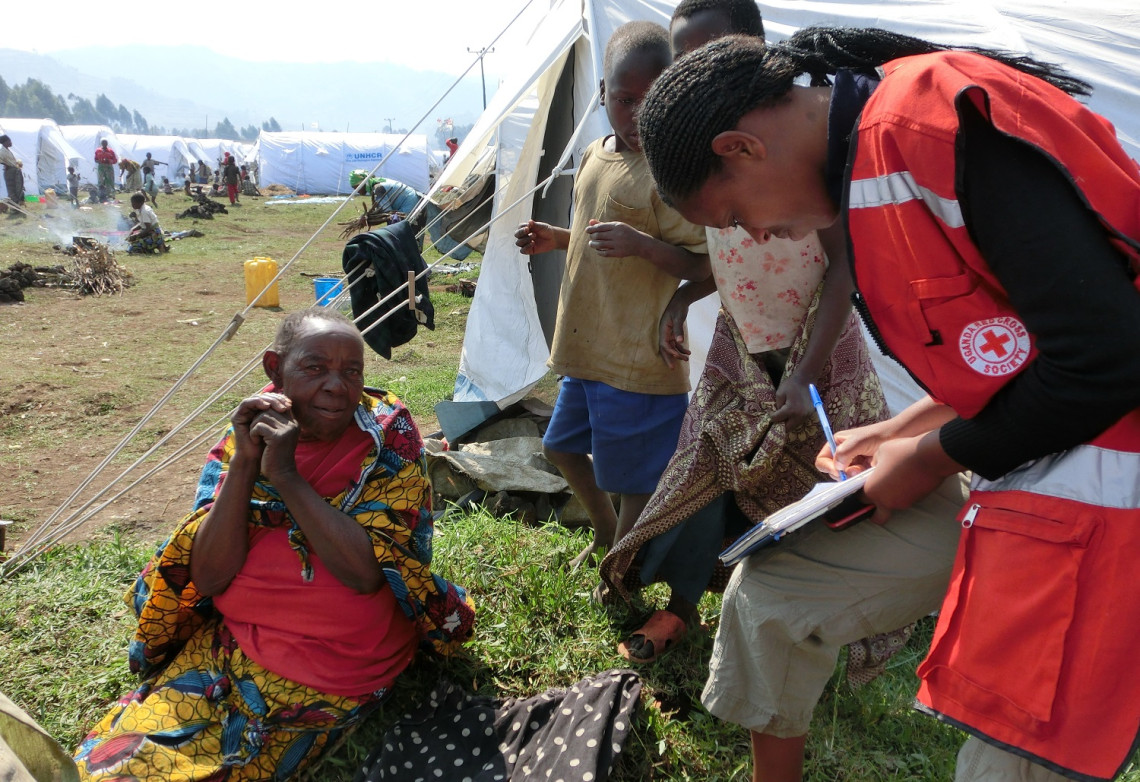
Protection in the Movement
Protection work is increasingly important for the Movement. Millions of people continue to suffer violence, discrimination and exclusion of all kinds in armed conflicts, other situations of violence, health crises and natural disasters.
The COVID-19 pandemic has cast a harsh spotlight on inequalities within societies and how they put people who are marginalized or potentially "left behind" at disproportionately higher risk. Risks and needs related to gender and diversity and inclusion are ever more apparent.
Enhancing protection work within the Movement can only be achieved through increased cooperation and exchanges between its components. Operationally, this cooperation is already well established through contacts and coordination at field level.
To ensure the best possible coherence of approaches and participate to the promotion of best practices within the Movement, the Movement Protection Advisory Board (AB) was established in 2018 by the ICRC, together with the IFRC and National Societies and comprises representatives of the IFRC and the National Societies from Australia, Belize, Lebanon, Nigeria, Norway, South Sudan, Sweden and Turkey.
Since 2018, several strategic and operational initiatives have been implemented by all components of the International Red Cross and Red Crescent Movement (Movement), aiming to achieve greater coherence and collaboration on Protection issues.
These include the Movement Protection Framework and the Minimum Protection Approach approved by the Movement Protection Advisory Board in March 2018.
This includes as well the IFRC Protection, gender and inclusion (PGI) policy and operational framework; the Movement strategy on migration; the Restoring Family Links (RFL) platforms; and the 2019 Council of Delegates resolution "Strengthening implementation of the Movement Policy on Internal Displacement: Ten years on" and "Restoring Family Links while respecting privacy, including as it relates to personal data protection".
The Minimum Protection Approach
The Minimum Protection Approach seeks to provide National Societies (NS) and other Movement partners with guidance on how to ensure they are able to provide a minimum level of response to protection needs identified through the course of their work.
The approach describes how an NS can ensure their capacity to analyse, prioritize, and react to violations of the rights of the individuals it is assisting, in fulfilment of the Fundamental Principle of Humanity and as local actors, auxiliary to the authorities in providing impartial humanitarian assistance.
The "minimum protection approach" (MPA) includes ensuring that all programmes and operations "Do no harm", and mainstream protection concerns, while building in further measures to reactively address protection concerns identified by staff, volunteers, community members or beneficiaries.
The Movement Protection Framework
The Protection Goals of the Red Cross and Red Crescent Movement
The mission of the Movement is "to prevent and alleviate human suffering wherever it may be found, to protect life and health and ensure respect for the human being". The principle of impartiality also exhorts all components of the Movement to "make no discrimination...being guided solely by needs, and to give priority to the most urgent cases of distress."
The Movement seeks to ensure that people in need receive the protection they are entitled to under international and domestic law. This includes the special protection that certain categories of people are entitled to – for examples refugees. The protection activities of the Movement are therefore driven by needs and informed by rights.
It is the primary role and responsibility of State authorities and relevant non-State actors to protect people and ensure their security. However, authorities frequently lack the capacity or the will to ensure that people at risk are protected.
The overall aim of protection is to address the causes of violations, the circumstances that lead to them and their consequences, by ensuring that authorities fulfil their obligations to protect all people without discrimination. This includes protection activities that aim to stop or prevent violations of relevant bodies of law.
Protection in humanitarian action in the Movement has both internal and external aspects. Internally, it refers to ensuring that the actions of the Movement respect, and do not endanger the dignity, safety and rights of persons. Externally, it refers to action intended to ensure that authorities and other actors respect their obligations and the rights of individuals.

